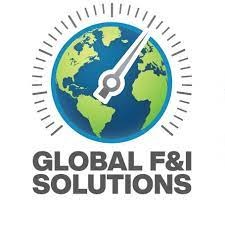
The Chasm Grows: Understanding the Auto Borrower Divide
A growing disparity is emerging among auto borrowers as escalating car prices and high-interest rates intersect with ongoing affordability challenges. According to a recent report from Edmunds, the average monthly payment for consumers rolling negative equity into new car loans reached an all-time high of $915 in the second quarter of 2025.
This situation signifies a serious financial divide within the auto market. On one side, there are borrowers with good credit who are reaping the benefits of reduced loan rates; on the other, a significant segment of consumers is finding themselves trapped in an unmanageable financial cycle. The Federal Reserve's decision to keep interest rates stable only compounds these issues as many car buyers grapple with elevated vehicle prices and dwindling inventory.
Financial Distress for Many Borrowers
Research from Edmunds reveals that over 27% of trade-ins were considered "under water" in the second quarter, meaning the owners owed more on their vehicles than they were worth. The implications of this negative equity are staggering, with nearly 8% of these borrowers owing more than $15,000. This scenario presents a significant challenge for consumers who had previously managed financially, but now face compounding pressures from rising vehicle costs and loans with much higher rates than in the past.
Opportunities Amongst Rising Tensions
Despite the difficulties outlined, there may be opportunities for car dealership owners to adapt and thrive. Cox Automotive reported a recent uptick in zero-percent financing programs. For July, nearly 7% of new vehicle financings offered 0% APR, the highest volume seen in three years. This presents a chance for dealerships to attract buyers looking for affordability amidst rising costs.
Dealerships can effectively capitalize on this moment. With average new-vehicle loan rates falling to 5.4% for borrowers with high credit scores, savvy dealerships could target these consumers with tailored financing packages while simultaneously fostering better relationships with those struggling with negative equity.
Critical Consumer Strategies for Borrowers
In light of the competitive landscape, auto lenders and dealerships must educate borrowers on effective strategies to manage their financial challenges. According to Jonathan Smoke, chief economist at Cox Automotive, improving credit scores remains one of the most effective methods to secure better loan terms. Borrowers who manage to improve their credit scores by 100 points could unlock lower interest rates.
It’s crucial to provide potential and existing customers with resources for improving their credit scores. While not immediate solutions, initiatives like automotive training programs and workshops at dealerships can empower consumers with financial literacy. Programs from automotive training centers that focus on financing literacy could bridge the knowledge gap and enable borrowers to make informed decisions.
The Road Ahead: Predictions for the Automotive Market
The trajectory of the automotive finance market remains uncertain as car prices, tariffs, and interest rates continue to fluctuate. Economic indicators suggest prices may not drop rapidly, and the Federal Reserve's anticipated cuts are unlikely to make a significant impact. For power players in the automotive space, recognizing trends—such as shifts in consumer behavior and preferences for digital applications in auto financing—will be critical.
Emphasizing customer-centric solutions, whether through digital partnerships or more transparent loan structures, may determine success in a volatile market. Dealers should be ready to adapt to not only market realities but also to changing consumer demands.
Conclusion: Navigating a Fragmented Market
The auto borrower divide reflects deeper economic concerns impacting buyers across the board. For car dealership owners and general managers, understanding the financial landscape and equipping customers with knowledge can help build loyalty and trust. Whether through funding zero-percent loans or supporting borrowers through targeted financial education, the future of auto finance is contingent on how well the industry navigates these challenges. For more information on leveraging current market dynamics to your advantage and supporting your customers, call: (860) 707-9125.
 Add Row
Add Row  Add
Add 




Write A Comment